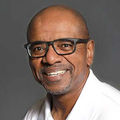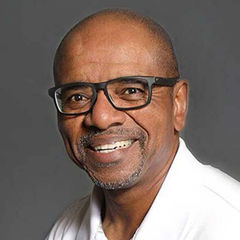The Centers for Disease Control and Prevention (CDC) recently released new data on physical inactivity levels across the United States, broken down not only by state but also by race/ethnicity. It may not surprise you to hear that, as the CDC says, “too many people in the United States are not physically active,” but there are lessons to be learned by digging through the data. Perhaps more importantly, ACE Certified Professionals may be able to better target their efforts by homing in on the areas and communities that most need their support.
In compiling these data, which covered the period between 2017 and 2020, the CDC defined physical inactivity as not participating in any physical activities outside of work over the past month, which includes activities such as running, walking for exercise, or gardening. Overall, the 2022 Inactivity Maps show that more than one in five U.S. adults is inactive outside of work in all but four states, with an overall prevalence of physical inactivity of 25.3%.
Pause to think about that for a moment: One-fourth of American adults perform no physical activity at all outside of their work responsibilities. Couple that with the increasingly sedentary workplace of the typical American and you begin to see how troubling these statistics really are.
When examined by state/territory, the highest rate of physical inactivity is seen in Puerto Rico (49.4%), with the lowest rate seen in Colorado (17.7%). In seven states and one territory, 30% or more of adults were physically inactive.
Let’s look at how the data were distributed by race/ethnicity:
- Asian: 20.1%
- White: 23.0%
- American Indian/Alaska Native: 29.1%
- Black: 30.0%
- Hispanic: 32.1%
The CDC suggests that a lack of access to safe and convenient places to be physically active may contribute to these racial and ethnic disparities, and encourages community leaders to find ways to make physical activity safe and enjoyable for people of all ages and abilities. Active and walkable communities not only increase physical-activity levels but also may help support local economies and create more cohesive communities.
Finally, while these data may be jarring, there are plenty of opportunities to make a difference in the health and wellness of Americans, across all state and racial lines.
The CDC’s Active People, Healthy NationSM Initiative has a mission of helping 27 million Americans become more physically active and “creating an active America, together.”
ACE—with our mission of Getting People Moving—is proud to support this important initiative. A key value that ACE shares with Active People, Healthy NationSM is equitable and inclusive access to opportunities to be physically active, regardless of age, race, education level, socio-economic status, disability status, sexual orientation or geographic location.
So, what can you—and your approximately 90,000 fellow ACE Certified Professionals—do to become ambassadors for Active People, Healthy NationSM and help the CDC achieve this mission?
ACE Certified Personal Trainers, Health Coaches, Group Fitness Instructors and Medical Exercise Specialists are perfectly positioned to empower and inspire people to get moving, or to get moving more. For many of the people this CDC initiative is designed to reach, understanding the need for behavior change—and acquiring the tools to achieve it—are essential first steps.
In addition to encouraging current clients to add to their routines to reach certain physical activity–related milestones, exercise professionals and health coaches can participate in community-based programs that impact sedentary and inactive people they might not otherwise reach. Inspiring someone to participate in a single exercise session each week, even if the workout lasts only 10 minutes, can show someone who has negative associations with physical activity that it can be a fun and enjoyable experience, which may set them on a new path toward more regular physical activity.
Programs focused on youth present another opportunity for ACE Certified Professionals. Many children who have overweight or obesity have had negative experiences with physical activity, so the key here is to offer well-rounded exercise experiences that focus on fun and movement, not competition and comparison. In addition, inactive children often grow up to become inactive adults, so empowering youth to exercise and stay physically active may help the next generation reverse the tide on these trends.
ACE would like to challenge you to be creative as you think of ways to reach out to individuals who are currently inactive, as well as new ways to empower existing clients to increase their physical activity levels. Use the ACE Mover Method and other behavior-change principles and tools to meet people where they are in terms of both their health and fitness levels and their readiness to change their behavior. And remember, every person you reach is one more step toward achieving that 27 million milestone and, more importantly, is another person you have helped take ownership of their personal health and fitness or make progress on their personal journey toward better overall wellness.




 by
by 




